Creating a raised garden bed is more than just a practical gardening solution—it’s a way to bring structure, style, and sustainability to your outdoor space. Whether you’re looking to grow vegetables, flowers, or herbs, the right design can make all the difference in the success of your garden. With so many options available, it’s important to choose a design that not only meets your gardening needs but also enhances the aesthetic of your yard.

Raised garden beds offer a multitude of benefits, including better soil drainage, easier access for planting and harvesting, and the ability to control the soil quality more effectively. They are also a fantastic way to define garden areas, making your space more organized and visually appealing. From rustic wood frames to modern, sleek metal designs, the possibilities are endless when it comes to crafting a garden bed that reflects your personal style.
In this collection of DIY raised garden bed ideas, you’ll find inspiration for every type of gardener, from the weekend hobbyist to the dedicated green thumb. Each idea brings its own unique blend of functionality and creativity, ensuring that your garden not only thrives but also becomes a beautiful focal point in your outdoor living area. Whether you’re working with a small urban plot or a sprawling backyard, these ideas can be adapted to suit any space.
No matter your level of gardening expertise, these DIY projects can help you create a garden bed that is both practical and beautiful. By investing a little time and effort, you can transform your outdoor space into a thriving garden oasis, filled with the plants you love most. So, get ready to roll up your sleeves and start building a garden bed that will bring you joy and fresh produce for seasons to come.
1. Leverage the Microclimates
When planning your raised garden beds, consider the microclimates in your yard. Different sections of your garden might receive varying amounts of sunlight, shade, and wind. Position your beds strategically to maximize growth potential, taking advantage of the natural conditions already present in your outdoor space.
2. Optimize Soil Health
The quality of your soil is key to the success of your raised garden beds. Invest in high-quality, well-draining soil and consider adding organic matter like compost or manure to enhance nutrient levels. This foundational step will ensure your plants thrive and produce healthy yields, reducing the need for excessive fertilizers.
3. Plan for Water Management
Efficient water management is crucial for maintaining a healthy garden. Design your raised beds with built-in irrigation systems or plan for easy access to water sources. This will not only make maintenance easier but will also help in conserving water, ensuring your garden remains sustainable and productive.
Recommended Products
DIY Raised Garden Bed Ideas
15. Pallet Planter from Bright Nest

14. $35 Garden Beds from Queen Bee Coupons
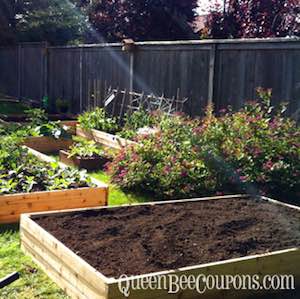
13. Patio Raised Beds from Unskinny Boppy
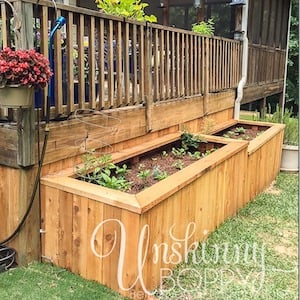
12. Raised Box from One Little Project

11. Simple Raised Boxes from Frugal Family Times
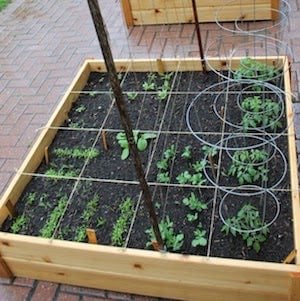
10. Reclaimed Wood Beds from Instructables
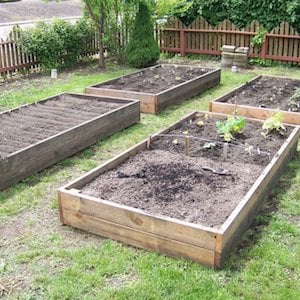
9. Thirty Minute Thirty Dollar Raised Bed from Five Little Homesteaders

8. $10 Cedar Gardening Beds from Ana White
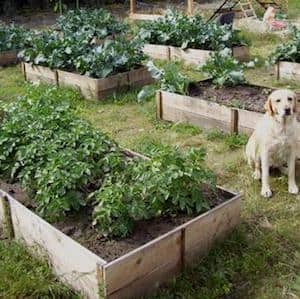
7. Raised Bed with Removable Pest Gate from Vegetable Gardener

6. $30 Planter with Chicken Wire Fence from Remove and Replace
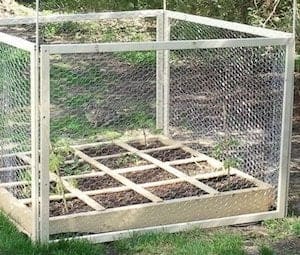
5. Elevated Planter from Addicted 2 Decorating
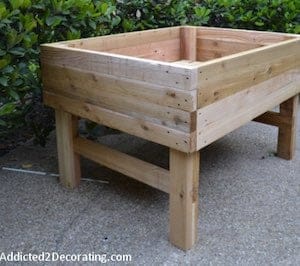
4. Durable Garden Bed That Will Last Years from Joyfully Growing
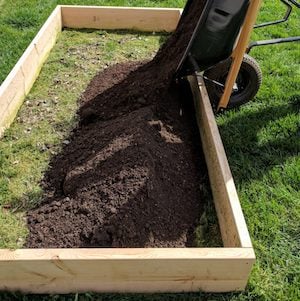
3. Strawberry Pallet Planter from Lovely Greens

2. Pallet Gardening from Crafting Creatures
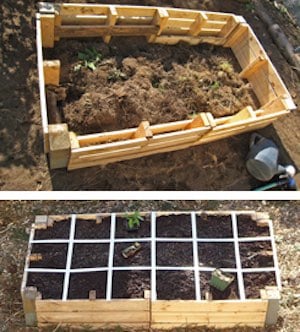
1. Pallet Crate Garden from Always Something
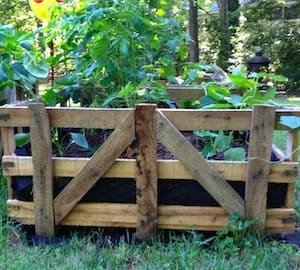
What materials are best for building a raised garden bed?
The best materials for building a raised garden bed include cedar, redwood, and composite wood. These materials resist rot and insects, ensuring that your garden bed lasts longer. Galvanized steel is another excellent option, offering durability and a modern aesthetic. It’s important to avoid treated wood that could leach chemicals into the soil, which can be harmful to plants.
How deep should a raised garden bed be?
The depth of your raised garden bed depends on what you plan to grow. For most vegetables, a depth of 12 to 18 inches is ideal, providing ample space for root growth. If you’re growing root vegetables like carrots or potatoes, consider a bed that’s at least 18 inches deep. This depth also helps ensure proper drainage and reduces the need for frequent watering.
Can I build a raised garden bed on uneven ground?
Yes, you can build a raised garden bed on uneven ground by adjusting the height of the bed walls to create a level planting surface. This can be done by stepping the garden bed, where you build the bed in sections of different heights, or by leveling the ground before construction. Proper leveling ensures even water distribution and healthier plant growth.
What type of soil should I use in my raised garden bed?
For optimal plant growth, fill your raised garden bed with a mix of topsoil, compost, and organic matter. A common ratio is 60% topsoil, 30% compost, and 10% organic matter like peat moss or aged manure. This combination provides essential nutrients, improves drainage, and promotes a healthy growing environment. Avoid using garden soil alone, as it can become compacted and hinder root development.


